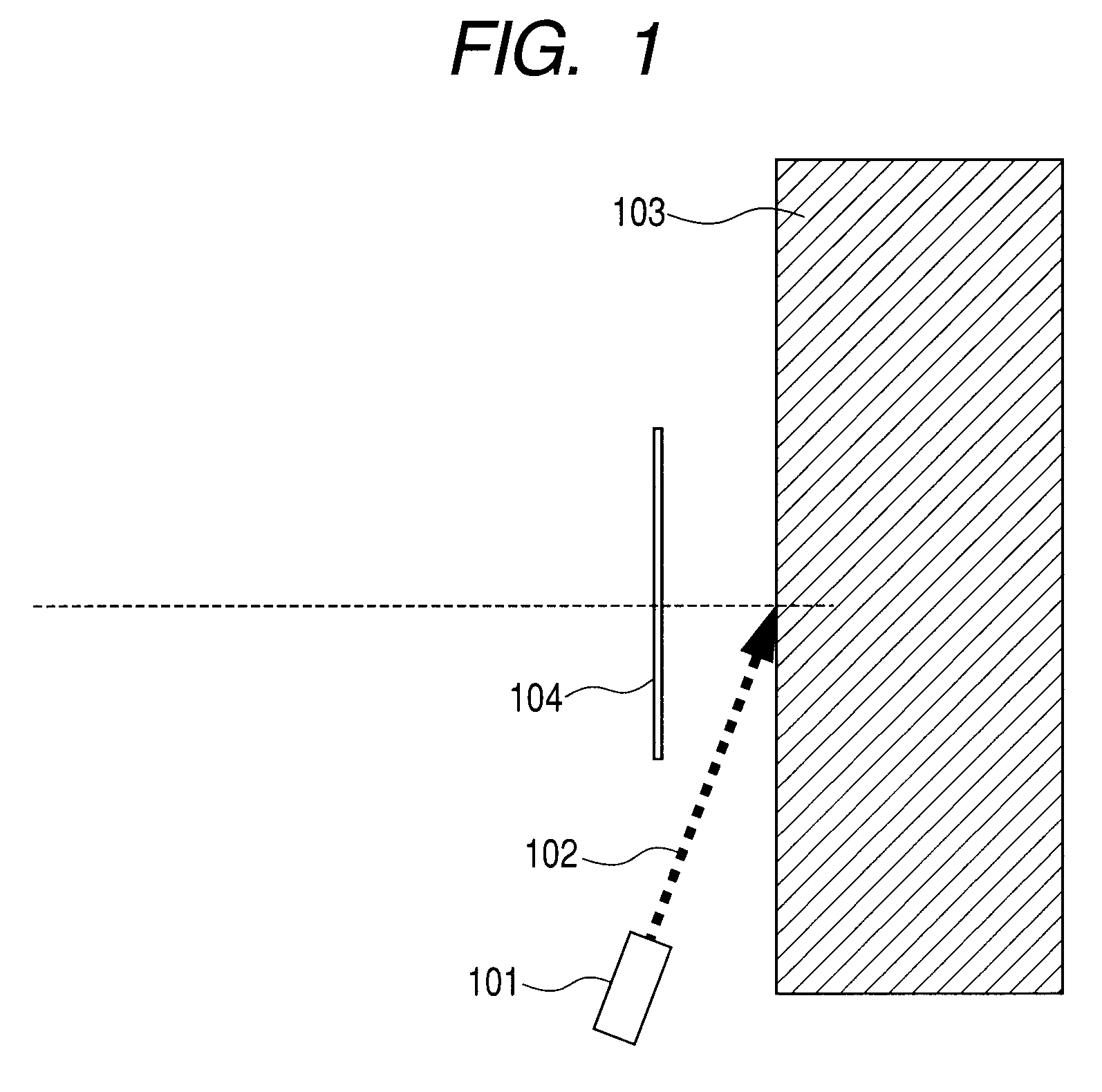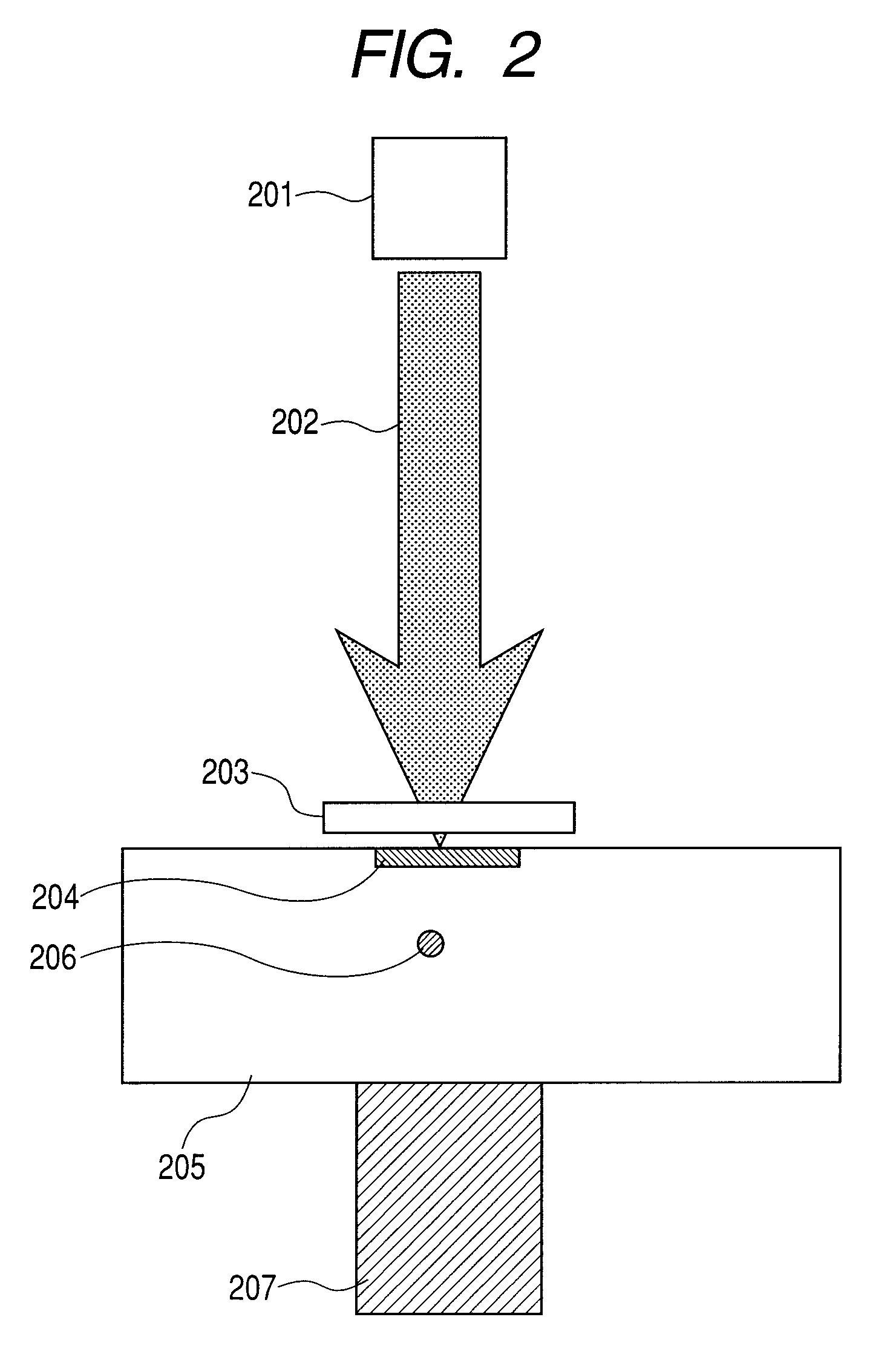Bioinformation acquisition apparatus
a bioinformation acquisition and apparatus technology, applied in the field of light-emitting bioinformation acquisition apparatuses, can solve the problems of reducing the strength of the acoustic wave signal coming from a deep portion of a living body, high cost of pulsed light source generators, and high cost of optical energy of light flux, so as to improve the use efficiency of radiated light
- Summary
- Abstract
- Description
- Claims
- Application Information
AI Technical Summary
Benefits of technology
Problems solved by technology
Method used
Image
Examples
example 1
[0075]Referring to FIG. 2, an example of a configuration of a bioinformation acquisition apparatus having a reflection-type polarization element in an example 1 according to the present invention will be described. A flux of light 202 emitted by a light source 201 is directed to a phantom 205 which is a simulated living body. Here, the flux of light 202 is applied to the surface of the phantom approximately vertically thereto. A reflection-type polarization element 203 is disposed in a propagating path of the flux of light 202 and the surface of the phantom is radiated through the reflection-type polarization element 203.
[0076]As the reflection-type polarization element 203, a wire grid polarizer is used here. A polarization state of the flux of light is linear polarization of a p-polarization component and the flux of light 202 passes through the reflection type polarization element 203 without loss of its optical energy. That is, a p-polarization component of the flux of light pas...
example 2
[0080]Referring to FIG. 3, an example of a configuration of a bioinformation acquisition apparatus having a reflection-type polarization element in an Example 2 according to the present invention will be described. This example basically has a like configuration as Example 1, only differing in that a λ / 4 wave plate 308 is inserted between a phantom 205 and a reflection-type polarization element 203. As described in a similar manner in the following examples, overlapping features will be omitted.
[0081]In Example 2 configured as described above, the strength of the photo-acoustical signal is intensified, the quantity of the radiated light is increased and the photo-acoustical signal is enhanced, as compared with the case without the reflection-type polarization element 203 and the λ / 4 wave plate 308.
example 3
[0082]Referring to FIG. 4, an example of a configuration of a bioinformation acquisition apparatus having a reflection-type polarization element in an Example 3 according to the present invention will be described. This example basically has a like configuration as Example 1, only differing in that a reflection-type polarization element 203 is positioned in contact with a phantom 205.
[0083]When the photo-acoustical signal is detected similarly to Example 1, the quantity of the radiated light is increased and the photo-acoustical signal is enhanced, compared with the case without the reflection-type polarization element. Also, when the reflection type polarization element 203 varied in size is used for measurement, the signal strength is considerably improved at the size thereof equal to or slightly larger than the area of the irradiation area 204.
[0084]In this example, the quantity of light applied to the irradiation area can be effectively increased, as compared with the case where...
PUM
| Property | Measurement | Unit |
|---|---|---|
| diameter | aaaaa | aaaaa |
| frequency | aaaaa | aaaaa |
| length | aaaaa | aaaaa |
Abstract
Description
Claims
Application Information
 Login to View More
Login to View More - R&D
- Intellectual Property
- Life Sciences
- Materials
- Tech Scout
- Unparalleled Data Quality
- Higher Quality Content
- 60% Fewer Hallucinations
Browse by: Latest US Patents, China's latest patents, Technical Efficacy Thesaurus, Application Domain, Technology Topic, Popular Technical Reports.
© 2025 PatSnap. All rights reserved.Legal|Privacy policy|Modern Slavery Act Transparency Statement|Sitemap|About US| Contact US: help@patsnap.com



